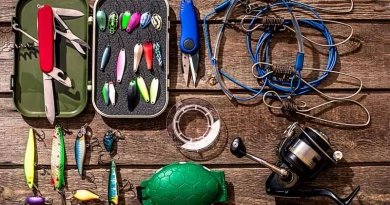
What Should I Pack For A Day Hike?
Crafting the Perfect Hiking Pack
This isn’t merely a matter of throwing a few items into a backpack; it’s about preparing for the unexpected, ensuring comfort, and maximizing the joy of exploring the wilderness.
Every trail whispers secrets of the natural world, promising vistas unseen and paths untrodden. But to hear these whispers, one must be prepared. The main obstacle isn’t the lack of equipment—it’s knowing what’s essential. Hiking gear can be as vast and varied as the trails themselves, from the arid expanses of desert parks to the dense, mist-laden forests of the highlands.
The question then becomes: How do you choose what to take without overpacking or under-preparing? The challenge lies in balancing weight with necessity, comfort with utility, and preparation with spontaneity.
The essence of a good pack is not in its size, but in its contents. Over the years, I’ve refined my list to include items that cater to the demands of most trails I’ve faced. Here’s how I address this delicate balance:
- Hydration is Key: Water is life, especially on the trail. For a day hike, a two-liter water reservoir is essential. In areas where water sources are abundant and safe, carrying a lightweight water filter or purification tablets can save weight and space.
- Nutrition for the Trail: Energy bars, nuts, dried fruits, and perhaps a sandwich with a good balance of protein and carbs. The goal is to pack foods that are nutrient-dense and light—food that fuels your journey without weighing you down.
- Weather-Ready Clothing: Layering is your best strategy. A breathable base layer, an insulating layer, and a waterproof outer layer will prepare you for changes in weather. Don’t forget a hat for sun protection or extra warmth, depending on the climate.
- Navigation Tools: While many trails are well-marked, a map and compass are indispensable when signs are sparse or non-existent. GPS devices are handy, but they are no substitute for the reliability of good old-fashioned analog navigation.
- First Aid Essentials: A basic first aid kit is non-negotiable. Include bandages, antiseptic wipes, blister treatments, and any personal medications. This small kit can be a lifeline in minor accidents or unexpected delays.
- Safety and Emergency Gear: A whistle for signaling, a multi-tool for quick repairs, and a headlamp or flashlight with extra batteries. Additionally, a fire-starting kit and a small, lightweight emergency shelter provide a safety net against the unforeseen.
- Leave No Trace: Pack a small trash bag. Keeping the trails as pristine as you found them is not just courteous; it’s crucial for the conservation of these precious environments.
Resources and Tools to Pack Smart
The best way to ensure you’ve packed effectively is to use a checklist. Many are available online, tailored to different environments. Investing in high-quality, durable gear that withstands various weather conditions and terrains is also wise. Lightweight, compact tools designed for hiking can make a significant difference in how you experience the trail. Here are the 10 essentials:
- Map, compass, GPS device
- Headlamp, flashlight, and batteries for both
- Sunscreen, at least SPF 30
- First Aid Kit
- Knife and multitool
- Lighter, matches, striker stick (for starting camp fire)
- Light shelter (one person tent)
- Light weight food. Energy bars, dried fruit, and instant drink mix.
- Water. Always have a canteen or large water bottle, plus an extra.
- An extra set of clothes, including underwear and two pairs of socks.
The Journey is the Destination
As I zip up my backpack and set out into the growing light of dawn, the weight on my shoulders feels familiar and comforting. It’s the weight of preparedness, of adventure—a tangible reminder of the freedom that awaits in the wild. Packing for a hike isn’t just about preparing for what might go wrong; it’s about ensuring you can embrace everything that goes right.
The trail calls, not just to tread upon it, but to be mindful and respectful of its twists and turns, its peaks and valleys. Every item in my bag is a symbol of this mindfulness, a tool that enables me to discover, educate myself about, and transform through contact with the natural world. So, pack wisely, tread lightly, and let the journey shape you as much as you shape it.






